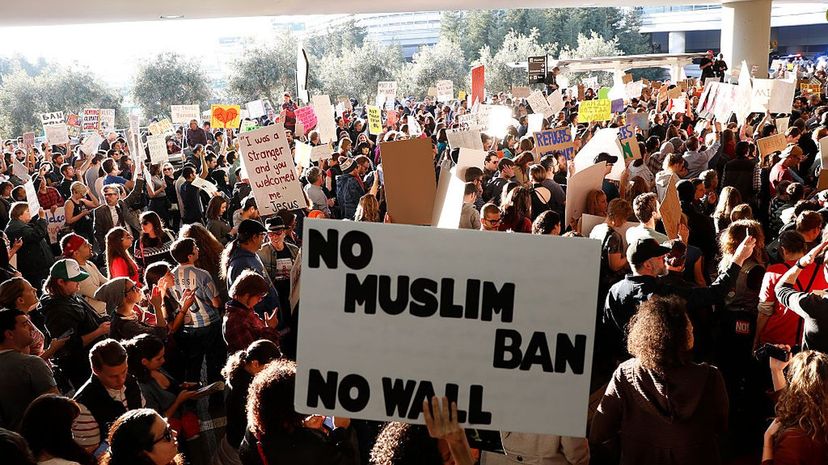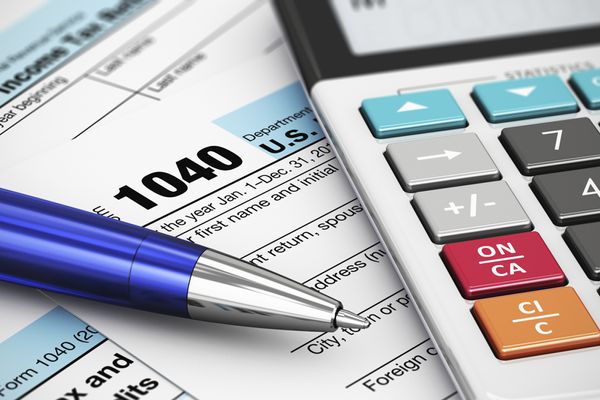
California state legislators made headlines this year threatening to cut off tax payments to the federal government in response to President Donald Trump's executive order punishing so-called "sanctuary cities," whose police forces do not hand over illegal immigrants to the federal authorities.
California is one of about 14 "donor states" where residents pay far more in federal taxes than they get back in federal aid and contracts. While Californians are unlikely to commit mass tax evasion, it does bring up the question of why some states are more dependent on federal money than others.
Advertisement
Joseph Henchman is vice president of legal and state projects at the Tax Foundation, a nonpartisan organization dedicated to tax policy. He explains that there are several factors that affect how much bang each state gets for its tax buck.
"On the revenue side, the biggest driver is the federal income tax, which is a very progressive system," says Henchman, referring to the fact that earners are taxed at higher rates as their income increases. "So in places with higher incomes — California and New York — they're putting a lot more into the system. On the spending side, there are a lot of federal programs to help low-income people. So, if your state has a lot of low-income people, you tend to be a net recipient."
Back in 2005, the Tax Foundation published the very first state-by-state comparison showing how many federal dollars each state receives for every dollar paid in federal taxes.
At the time, New Jersey was the most generous donor state, paying $9,902 in federal taxes per resident and only getting back $6,740 in federal spending. That's 61 cents for every tax dollar. Nevada was the second big donor, mostly because of taxes on casinos, followed by Connecticut, where its high-earning residents got back 69 cents on their federal tax dollar.
The biggest recipient state in 2005 was New Mexico, where taxpayers got a "two for one" special, receiving $2.03 in federal spending for every dollar they paid in federal taxes. In addition to having one of the highest poverty levels of any state, New Mexico is also home to huge government-run nuclear facilities, large military bases and lots of federally owned land.
The other top recipient states were Mississippi with its large low-income population and Alaska, whose small population numbers and long history of Washington D.C. earmarks, resulted in nearly $14,000 in federal spending per resident compared with $5,400 in taxes paid.
WalletHub ran the numbers again in 2016 and found most states in roughly the same spots, with large swaths of the Deep South receiving far more federal dollars per capita than New England and California. (Click on each state in the graph below to see where they rank. The lower the number, the higher the dependency on the federal government.)
Much has been made of the fact that "red" states (states that typically vote Republican) receive far more federal dollars per capita than "blue" states (states that typically vote Democrat), even though Republicans strongly advocate for a smaller federal government and cuts to entitlement programs. In WalletHub's analysis, states that went red in 2012 had an average dependency rank of 17.13 while blue states averaged 33.23.
When the Tax Foundation looked specifically at how much of a state's total revenue came from federal grants-in-aid, the numbers were pretty stark. Both Mississippi and Louisiana relied on federal aid for more than 40 percent of their general revenue. Tennessee, Montana and Kentucky came in just under 40 percent. All are red states.
Sources of grants-in-aid include Medicaid, transportation money, law enforcement grants, housing grants, "anything where the fed government is cutting a check to the state government to then transfer it to recipients," says Henchman.
There isn't a formula as to how much federal money each state gets. Henchman points out that more than 75 percent of the federal budget comprises Social Security, Medicare, Medicaid, social programs like food stamps and defense spending. Social Security is technically a trust fund and not "aid." The rest of the money allocated to a state depends on the income of the people living there, whether military bases or defense contractors are located there, plus how good its politicians are at bringing home the pork. Eighty percent of federal revenue comes from income tax and payroll taxes.
Henchman is a Californian himself and understands why his Golden State neighbors grumble about subsidizing federal aid programs in other states. For one thing, large amounts of federal spending allow red state governments to keep their taxes artificially low. The highest individual state income tax rate in Mississippi and Alabama in 2016 was 5 percent, while top-earners in California and New York paid 13.3 percent and 8.82 percent respectively.
Part of the problem is a far-off federal government trying to legislate one-size-fits-all solutions in states and localities with different needs. And, some argue, this redistribution helps to level the playing field for all citizens regardless of which state they live in.
Advertisement


